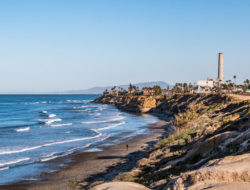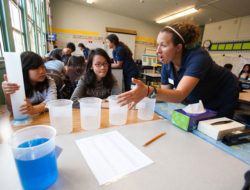Food waste and other organic materials make up the largest share of the Miramar Landfill—nearly one-third, according to the city’s most recent waste-characterization study, which involves people sifting through tons of our garbage by hand. Food scraps alone account for 15 percent, or approximately 200,000 tons, of our annual waste.
Few people have qualms about throwing food scraps into the trash. It’ll just biodegrade and return to the earth, right? Not exactly. Garbage that goes into the landfill never touches the soil, which is lined per federal regulations.
As they decompose, these organic items give off methane and other greenhouse gasses that need to be precisely managed over a long period of time, which requires ongoing resources and attention. The city captures most of this gas and uses it for energy, but the landfill will continue to be active for decades and eventually the gasses will be burned off, releasing some environmental contaminants.
The city is encouraging residents to give composting a try by providing online how-to guides and free backyard composting workshops at sandiego.gov. “The landfill is designed to be the grave for material that does not have value,” says Renee Robertson, supervising recycling specialist for the City of San Diego. “Organic material has a lot of value. Our soil in San Diego needs those nutrients.”
For businesses that produce a large amount of organic waste—4 cubic yards or more—it’s now mandatory to participate in the city’s composting program, per state law AB 1826, which began implementation in 2016. It’s good news for green thumbs, who can pick up high-quality compost for free from the landfill.
Tags: Energy, Environment, Garbage






























